Number Sense Teaching Resources
Browse printable worksheets, hands-on math center activities and more teaching resources designed to teach number sense in the elementary classroom.
Developing number sense is an important building block for elementary math students and unlocks a deeper understanding of numbers and their relationships. Aligned with Common Core, each worksheet, game and century activity was created by teachers with teachers — and students — in mind to help build those skills in ways that engage and excite students about numbers!
Want to learn more about number sense? Read on for a primer from our teacher team, including a definition of number sense, how to assess this important math skill and more!
What Is Number Sense?
In the most basic sense (no pun intended), number sense refers to a student's intuitive understanding of numbers and their relationships. It includes the ability to estimate and compare quantities, understand numerical patterns and relationships and make reasonable judgments about the accuracy of calculations.
When students show an understanding of numbers, their size, relationships, and how they are affected by the four mathematical operations, what they're really showing is their number sense.
In an educational setting, building number sense is closely related to other foundational skills such as problem-solving, critical thinking and logical reasoning. As our students get older, it will become a crucial skill for daily life they will use to manage finances, calculate time and make decisions based on numerical information.
Teach Starter Teacher Tip: Although the names may seem interchangeable, it's worth noting that number sense is not the same as mathematical fluency or memorization of algorithms, but rather a deep understanding of the underlying concepts and relationships between numbers.
When Does Number Sense Develop?
There is no one grade level when we're teaching students number sense — instead, it continues to develop and become more sophisticated as students progress through elementary school.
Research suggests that babies as young as 6 months old can distinguish between small and large numbers of objects, and by preschool, students are already working on number sense as they begin to learn counting and one-to-one correspondence. At this level, they're also beginning to develop an understanding of quantity and relative size — both key to overall number sense.
Number sense will continue to grow in elementary school as students become more adept at recognizing and using numbers to solve problems, and it continues into high school and — for many students — into college.
Assessing Number Sense
When we assess students for their number sense skills, there are certain mathematical concepts that they should have under their belts. These include:
- Ability to Recognize Missing Numbers in a Pattern —When kids can fill in missing numbers in a sequence, they're showing that they can make connections between numbers and develop an understanding of the relationships between them.
- Ability to Use Mental Math — Students with number sense can use mental math to solve problems involving the four basic operations.
- Ability to Engage in Systematic Counting — Children who can count systematically can more easily understand the relationships between numbers, including number magnitude, patterns, and sequences.
- Ability to Subitize Numbers — Students can use visual clustering skills to instantly recognize how many objects are in a group without physically counting them.
- Ability to Relate Numbers to Real-World Problems —For example, a student may understand that "3" means "three objects" or "three days" or "three dollars."
- Ability to Compose and Decompose Numbers — Students use number sense when they break down numbers and put them back together. For example, a student who can break down the number 10 into 8 and 2, then add the two back together to again make 10, is using number sense.
- Plus Plan
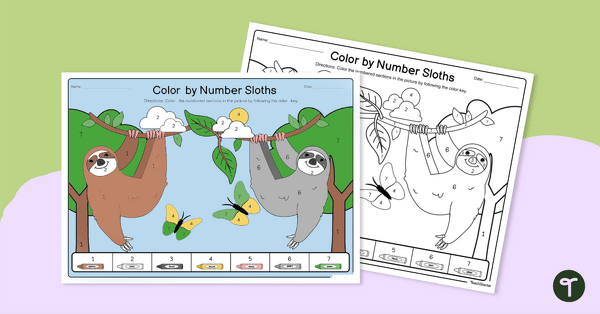
Number Recognition Worksheets - Sloth Color-by-Number
Provide your preschoolers with a fun color by number activity to practice number recognition, color recognition, and fine motor skills.
- Plus Plan

Touchdown Throwdown Number Recognition Game
Win the number recognition championship with a football-themed partner game!
- Plus Plan
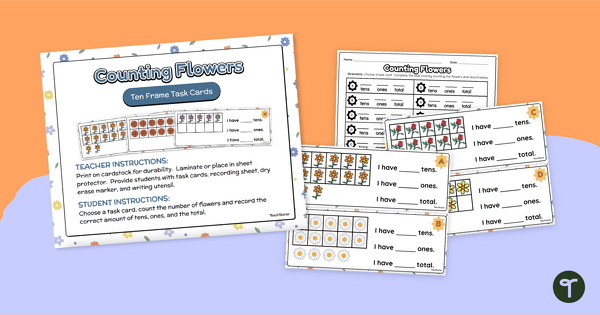
Kindergarten Ten Frame Activities — Spring Task Cards
Use our kindergarten ten frame activities to step up your students’ number recognition, counting, and subitizing skills.
- Plus Plan

Numbers 0 to 20 - Playdough Mats for Fine Motor Development
A set of number playdough mats to help children develop their fine motor skills and identify the numbers from 0 to 20.
- Plus Plan
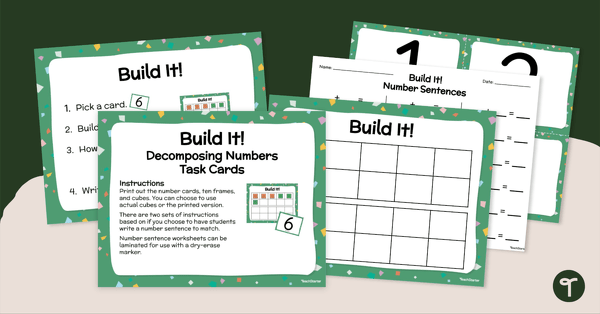
Build It! Decomposing Numbers – Task Cards
Practice decomposing numbers with this activity that has students splitting numbers into parts.
- Plus Plan
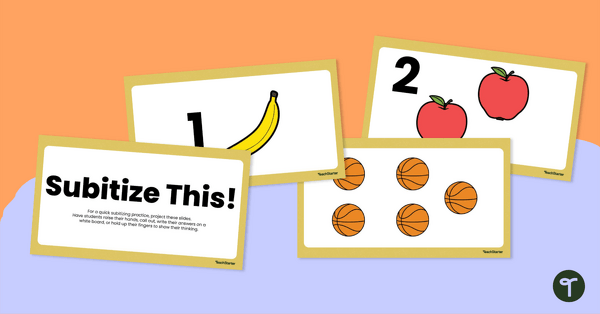
Subitize This! – Lesson Warm-up
Use this subitizing slide deck as a quick warm-up before your lessons.
- Plus Plan
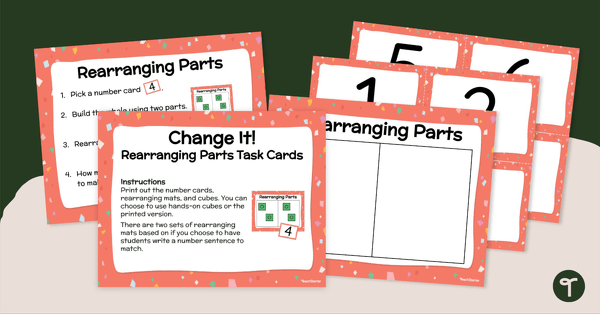
Change It! – Rearranging Parts Activity
Practice rearranging the parts of whole numbers into different combinations with this math activity.
- Plus Plan
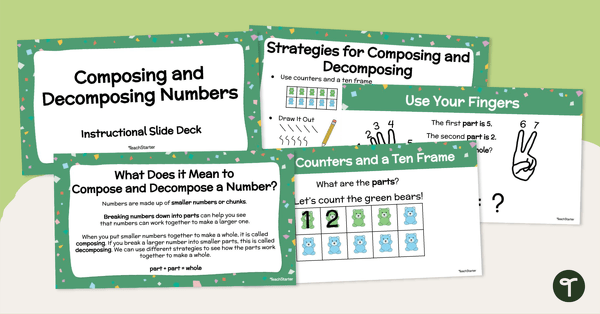
Composing and Decomposing Numbers - Instructional Slide Deck
Introduce composing and decomposing numbers to your students with this instructional slide deck.
- Plus Plan
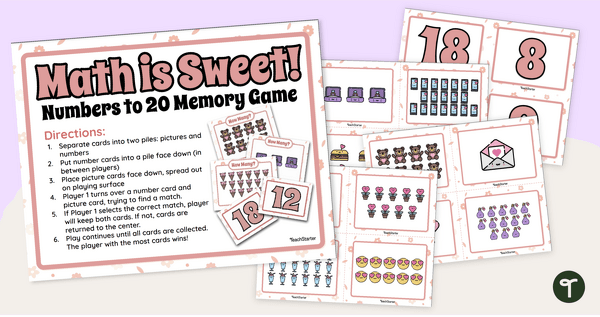
Valentine's Day Math - Counting to 20 Task Cards
Practice numbers 1 to 20 with a set of printable Valentine’s Day task cards created by teachers for teachers.
- Plus Plan

100 Sprinkles for 100 Days Cupcake Craft
Sprinkle in some sweet counting practice on the 100th Day of School with a printable 100th-day celebration craft activity.
- Plus Plan
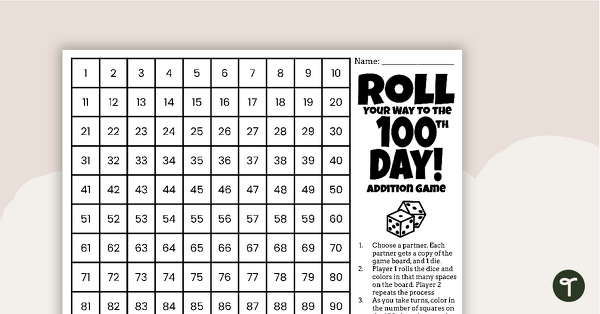
100th Day of School Dice Games - Roll to 100 Challenge
Roll your way through the 100th Day with dice games for kids.
- Plus Plan
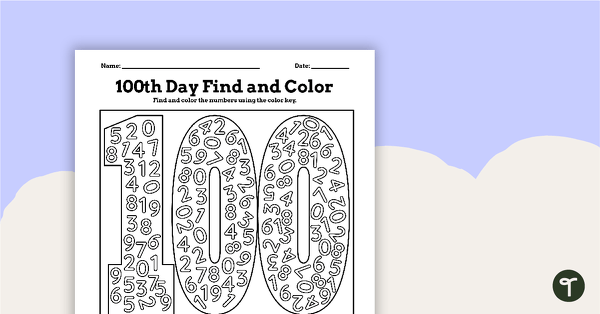
100th Day Find and Color - Numbers
Practice identifying numbers with a 100th day of school find and color worksheet.
- Plus Plan

I Can Draw 100 Shapes Worksheet — 100th Day Activity
Celebrate the 100th Day of School in the classroom with printable 100th Day of School Math worksheets.
- Plus Plan
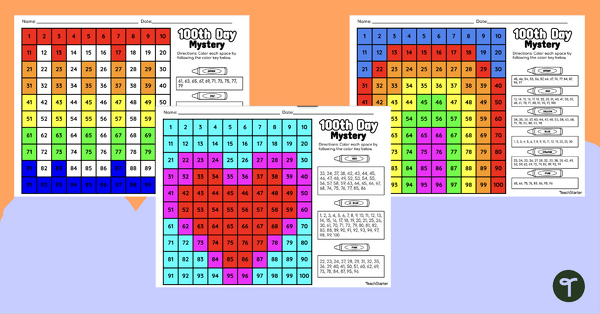
100 Grid Color by Number — 100th Day of School Activities Pack
Follow the color-coded number guides to fill in the hundreds chart square and reveal 3 special 100th Day of School mystery pictures.
- Plus Plan
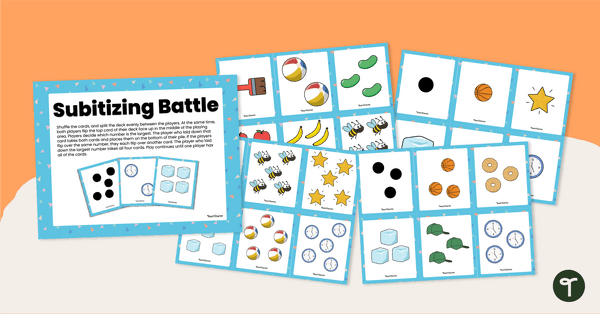
Subitizing Battle
Quickly subitize and compare numbers up to 5 with this fast-paced card game.
- Plus Plan
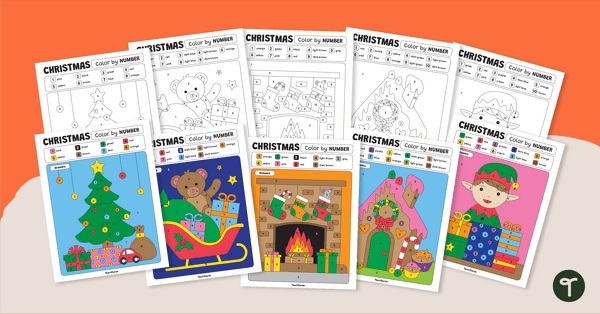
Christmas Color by Number Pack
Use knowledge of numbers to 10 to color in these Christmas color by number worksheets.
- Plus Plan
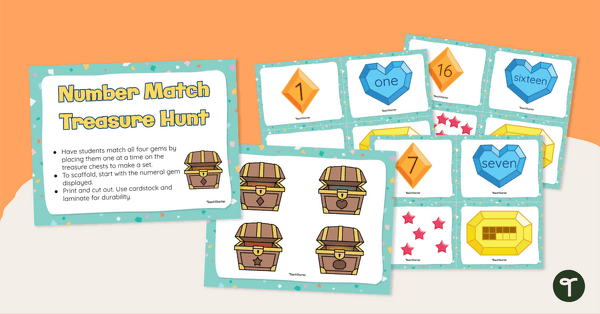
Number Match Treasure Hunt
Have students gather the treasure and make matches of numerals, quantities, and number names with this match-up activity.
- Plus Plan
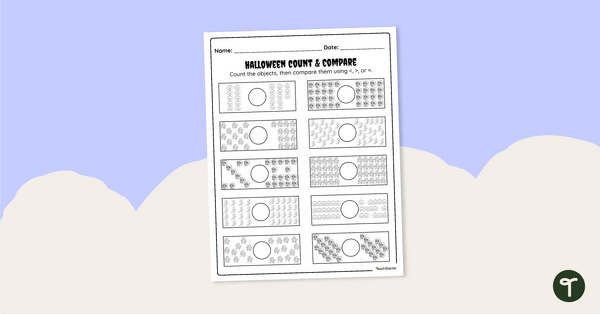
Halloween Count and Compare Worksheet
Have a spooktacular time practicing number comparisons with a count and compare Halloween math worksheet.
- Plus Plan
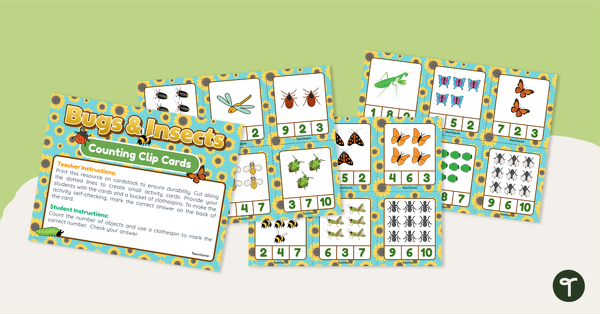
Counting Clip Cards - Insects
Practice counting objects with a set of 18 insect-themed counting clip cards.
- Plus Plan
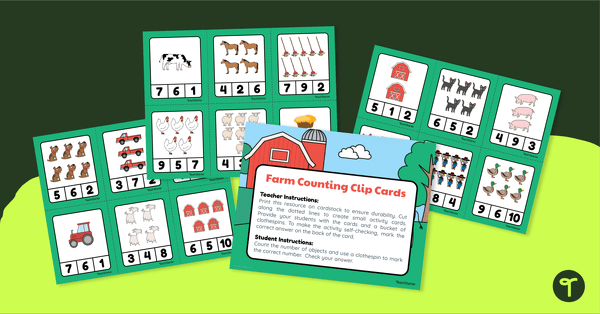
Counting Clip Cards - On the Farm
Practice counting objects with a set of 18 farm-themed counting clip cards.
- Plus Plan
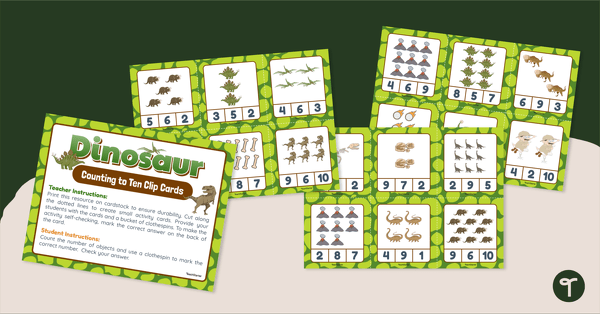
Counting Clip Cards - Dinosaurs
Practice counting objects with a set of 18 dinosaur-themed counting clip cards.
- Plus Plan
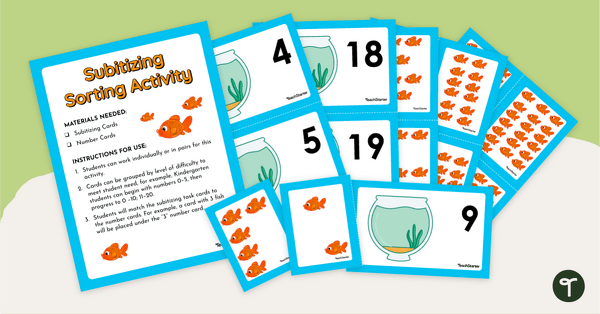
Subitizing Sorting Activity
Practice recognizing the quantity of a small group of objects with this subitizing sorting activity.
- Plus Plan
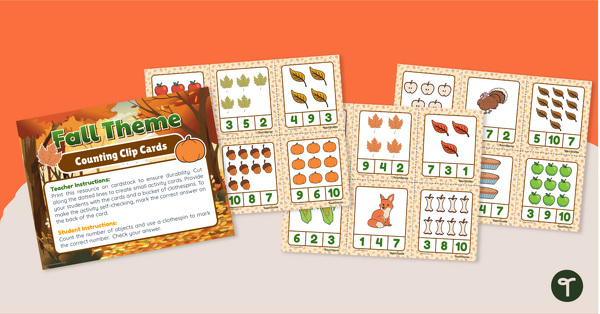
Fall Counting Clip Cards
Practice counting objects with a set of 18 fall-themed counting clip cards.
- Plus Plan
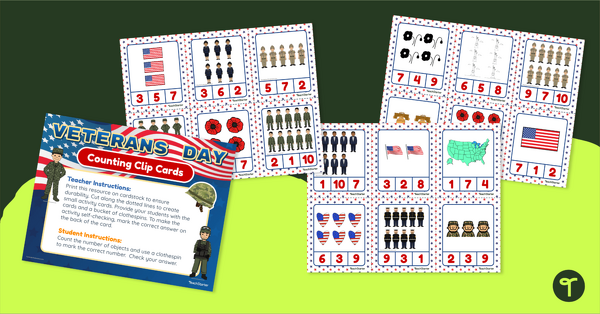
Counting Clip Cards - Veterans Day Activity
Integrate concepts of counting into your Veterans Day lesson plans with a set of 18 printable Veterans Day clip cards.
- Plus Plan
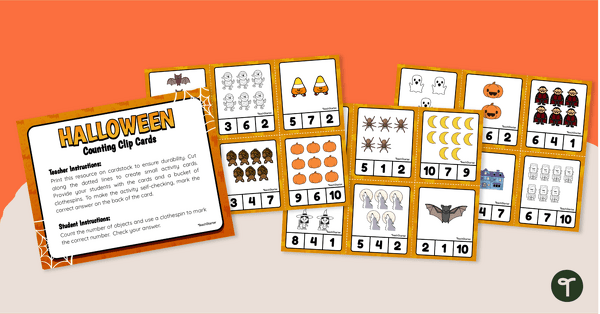
Halloween Math - Counting Clip Cards
Practice counting objects with a set of 18 Halloween clip cards.
- Plus Plan
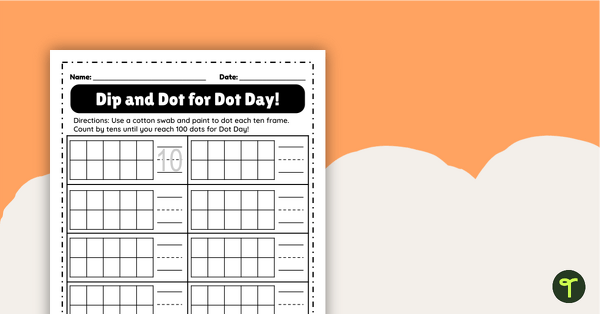
Counting to 100 — Dot Day Worksheet
Celebrate International Dot Day with this fun, hands-on way to learn how to count to 100 using ten frames.
- Plus Plan
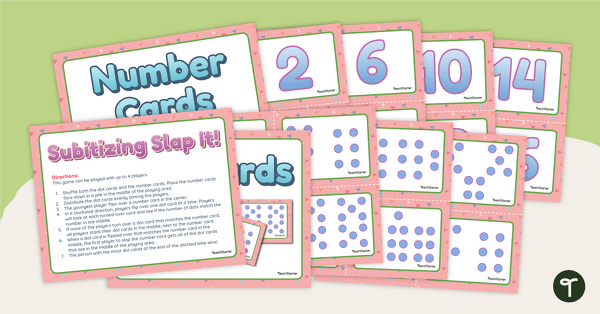
Subitizing Slap It!
Help students strengthen subitizing skills with this multiplayer math card game!
- Plus Plan
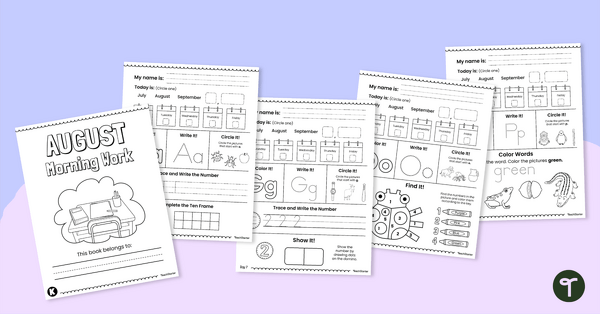
Kindergarten Morning Work (August)
Practice foundational math and language arts skills during the month of August with this collection of 23 kindergarten morning work worksheets.
- Plus Plan
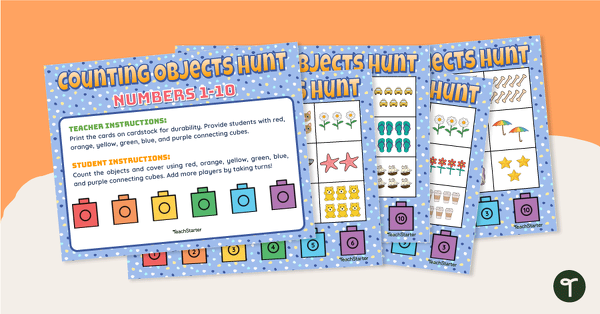
Counting Objects Hunt - Numbers 1-10
Use one-to-one correspondence skills to practice counting objects up through 10.
- Plus Plan
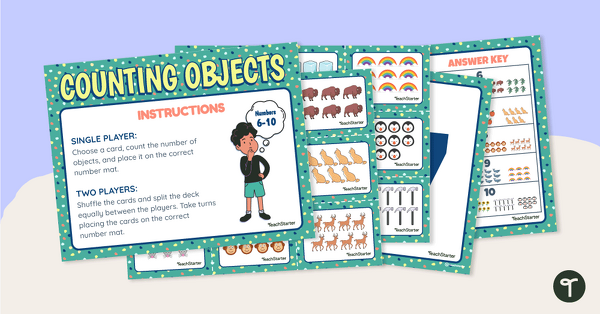
Counting Objects Sorting Numbers 6-10
Practice counting 6 – 10 objects with this colorful sorting activity.
- Plus Plan
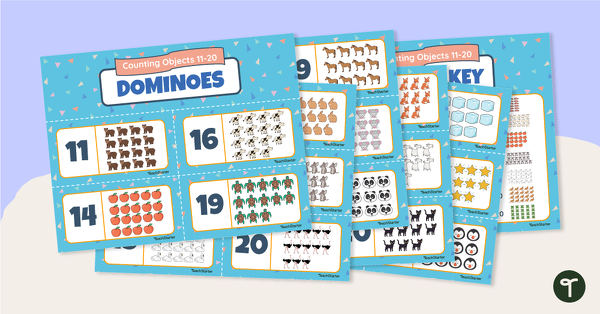
Counting Objects Dominoes Numbers 11–20
Practice counting objects by matching 28 numeral and picture dominoes.
- Plus Plan
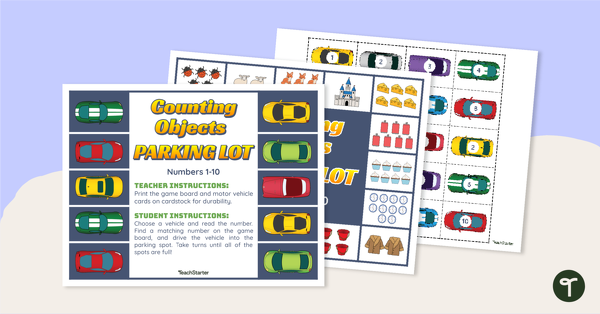
Counting Objects Parking Lot - Numbers 1-10
Practice counting objects and recognizing numerals with a match-up style game.